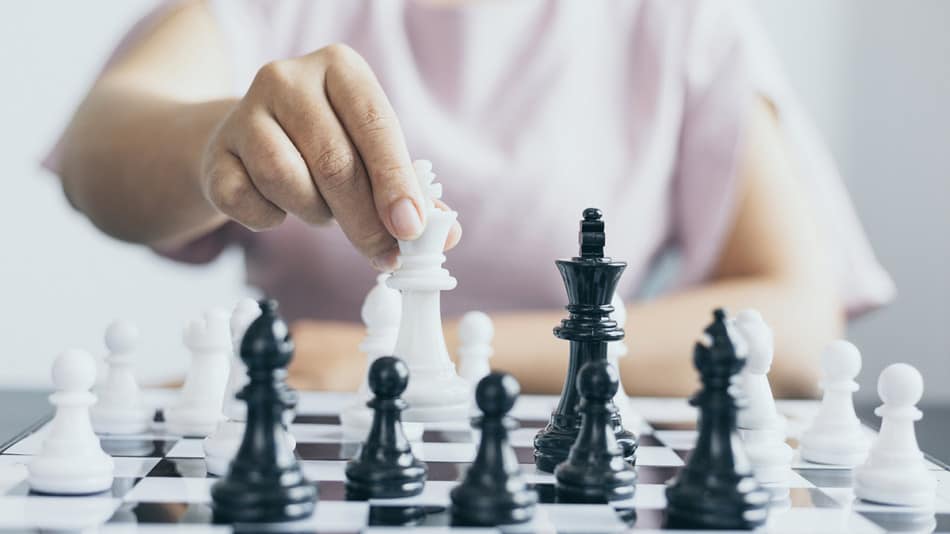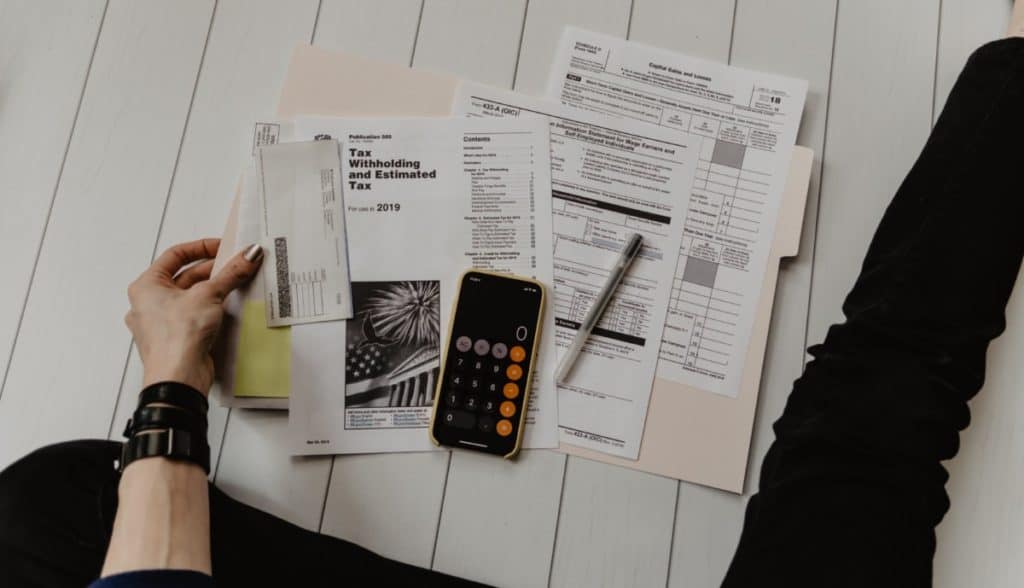Chess is a very hard, tactical, yet mesmerizing game. Grandmasters will spend years learning old tactics and coming up with their variations. While you can learn from a teacher, you may find yourself needing to teach yourself chess if there’s no one you can learn from around you – so how do you teach yourself to play this game?
Here are some ways you can teach yourself chess:
- Play a lot of chess.
- Find tutorials on Youtube.
- Watch grandmasters play.
- Join a chess club.
- Analyze your games.
- Devote a lot of time to it.
If you want to learn the simply outstanding game of chess, but have no clue where to start, then read on. Let’s take a look, shall we?
1. Play a Lot of Chess
If you want to get better at chess, then play more chess! It may seem obvious, but the best way to get your head around this game is to get stuck in. Play bots and real players online whenever you get a chance.
If you’ve never played the game before and are unsure of the basics, don’t worry – I go into how to start from scratch below, so you’ll have an idea of what to do when you play your first game of chess.
2. Find Tutorials on YouTube
YouTube can be a great educational tool for you. If you’re stuck for openings, don’t understand why your opponent is playing a particular move, or want some advice, don’t worry.
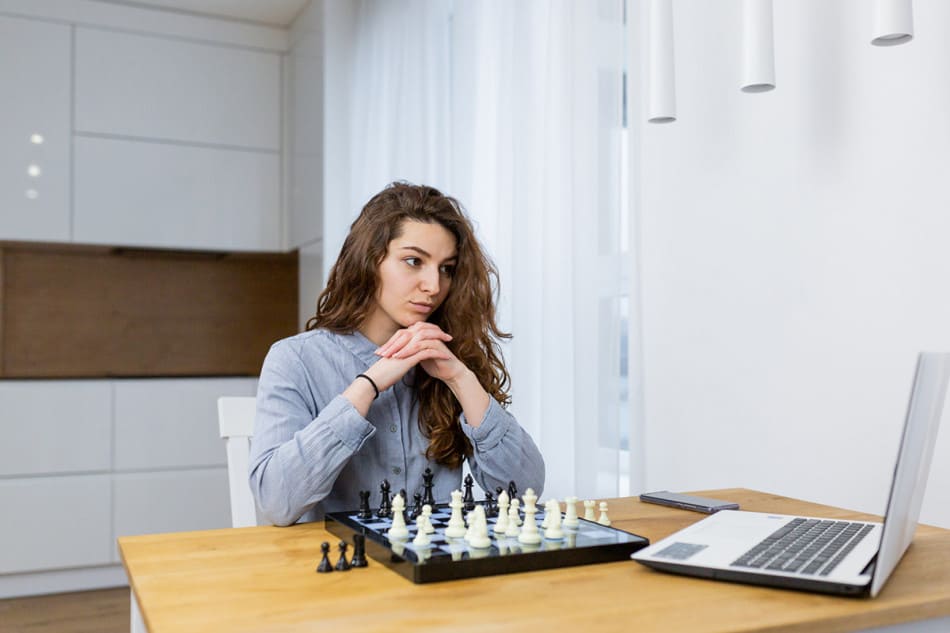
You can almost guarantee that you’ll be able to find the answer to all your questions on YouTube. It’s an excellent tool for anyone who wants to teach themselves chess.
3. Watch Grandmasters Play
Grandmasters are the best chess players on the planet. Watching their games is going to teach you a lot. Often, you’ll find that Grandmasters play creative moves that you will have never thought of. You can take these insights into future games and surprise your opponents.
You can watch old games online (YouTube has several classic options). Additionally, online chess forums can help direct you to other sources of videos.
4. Join a Chess Club
If you’re serious about learning chess, then join a local club. Members will teach you new openings, give you tips, and give you a significant challenge. You’ll also have a blast playing with real people on a proper board, and the experience you’ll gain playing someone else in-person will be second to none.
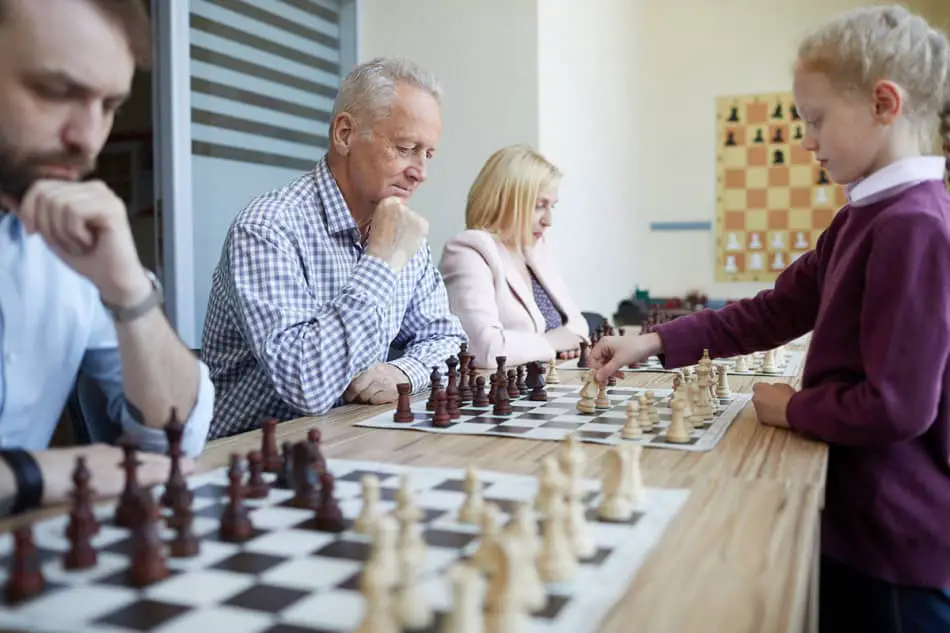
5. Analyze Your Games
Many online chess platforms give you the option of analyzing your past games. You’ll be able to see your blunders, mistakes and even missed checkmates. This can be an invaluable tool if you find you are losing many games in the same way, and will help you identify opportunities for improvement.
6. Devote a Lot of Time to It
Ultimately, to get better at chess, you need to devote a lot of time to it. Play as many games a day as you can, and try to play a few games daily. Watch one video on your favorite opening, or learn a new one. And don’t forget to take time to analyze where you went wrong.
Like any other new skill, learning chess takes time – but if you’re dedicated to it, it’ll be worth it in the long run.
How to Start Playing Chess From Scratch
If you have no clue about chess, then fear not! Here are some basics that you’ll need to know.
The board is made up of 64 squares, 32 being light and 32 dark.
On one end of the board are the white pieces, and on the other are the black pieces.
Each player takes it in turns to move their pieces, with white moving first. It’s essential to understand how each piece moves to know how to attack and defend.
- Pawns. Pawns are the least valuable of all the pieces in chess. They can move forward two squares on their first move but can only move forward one court after this. However, they can capture pieces diagonally in front of them.
- Knights. Each player has two knights. Knights move in ‘L’s,’ one square up and two squares along. They can also jump over pieces. They can capture any piece if they can land on that square.
- Bishops. Each player starts with two bishops. Then, they move in diagonal lines. Both players have one bishop on a light square and one bishop on a dark square.
- Rooks. Each player also has two rooks. A rook can move in straight lines and is one of the most powerful pieces in the game, but it takes several moves to activate.
- Queen. The queen is the most powerful piece in chess. It has the power of both the bishops and a rook. It can make or break your game, so use it wisely.
- King. The King holds the least power in the game. However, if it gets captured, then you lose. This is because it can only move one square in any direction. So if a piece threatens to capture your King, you are in ‘check’ and must find a way to protect your King. If you cannot find a way, then you are in checkmate, and you lose.
Mastering the basics is a fundamental skill. First, use a real chessboard, or an online one, to see how the pieces move and interact. Once you feel comfortable with this, you can move on to the next stage of mastering chess – the opening.
Learning the Opening Game
Learning the opening game is of paramount importance when you’re teaching yourself chess. The first few moves can decide how the rest of the game will play out, so you’ll want to make sure you put yourself in the best position to win.
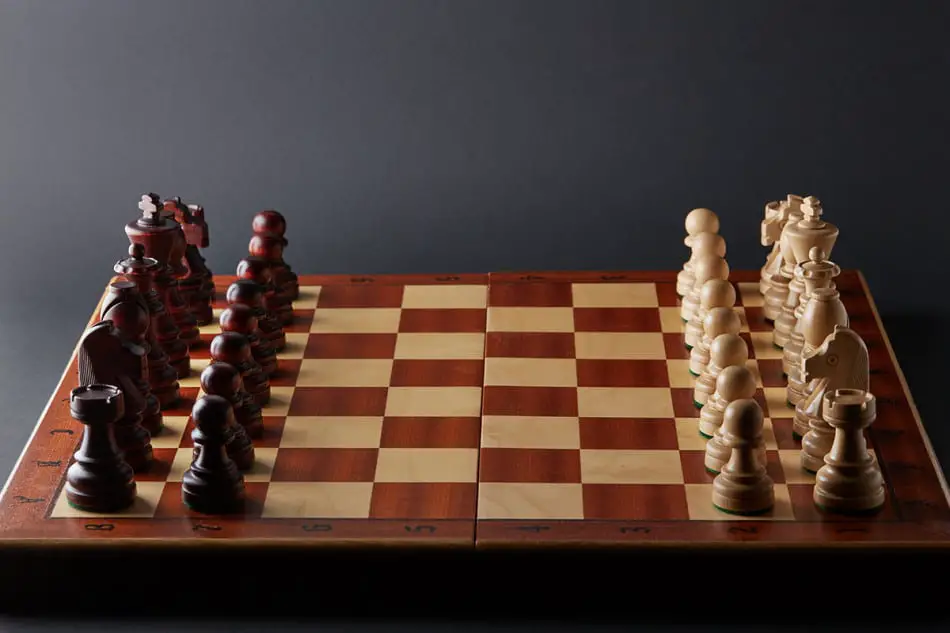
The key to a strong opening is to gain control of the center of the board. The four central squares are crucial to victory, as controlling them will allow you to defend your King while pressuring your opponent.
Another fundamental principle in the opening game is to develop your pieces. Developing your pieces simply means getting them on the board in positions that threaten your opponent. Learning this skill will give you a great chance of winning, especially if you can develop faster than your opponent.
The more you play chess, the more you will realize the importance of center control.
The opening game finishes when you have castled your King. Castling is when you swap the positions of your King and rook and can only be done when there are no pieces in between your King and rook.
Here are some great openings if you are playing as white:
- The Queen’s Gambit. This opening starts with your queen’s pawn to the d4 square. If your opponent mirrors and plays pawn to d5, you then play pawn to c4. This attacks the opponent’s pawn and also allows you center control. If your opponent takes your pawn, you can push your King’s pawn to gain great center control.
- The London System. The London system is an incredibly controlling opening starting with pawn e4, and then developing your knight to g3, and finally your dark-squared bishop to c4. You safely develop your pieces and gain center control at the same time. It gives you great opportunities for an attack on the black queen’s side.
If you’re playing as black, here are some excellent openings to try.
- The French Defense. The French defense is a great move to gain central control. It starts with pawn d3 and then pawn e5. This gives you an excellent pawn structure and allows you to develop your knights and safely control the center.
- The Indian Defence. Also, starting with d3 and then knight f6, the Indian defense is an incredible way to play a defensive game. Eventually, you’ll want to play pawn g6 and then bishop g7 before castling on the King’s side.
You can also refer to this YouTube video from GothamChess for a quick tutorial on how to play the French Defense:
Playing the Rest of the Game
Once you have connected your rooks, the real game begins.
The middlegame involves trading pieces and finding an avenue to attack. You’ll need to exploit weaknesses in your opponent’s defense and work from there to secure a checkmate.
Often, it can feel difficult to know what to do in the middle game. You don’t know how to attack, and you don’t want to overcommit and risk losing. This is what makes chess so tricky.
However, over time, you will learn how to organize yourself and attack effectively. You’ll find out if you’re an aggressive player or if you’d rather play towards the endgame and capitalize on your opponent’s mistakes.
The way you play will boil down to your style. If you’re an aggressive player, don’t try to play passively because your favorite grandmaster does. Adopt your style, and you’ll have the most success.
How to Learn From Your Mistakes
When you start to teach yourself chess, you’re going to make mistakes. You’re also going to lose – a lot.
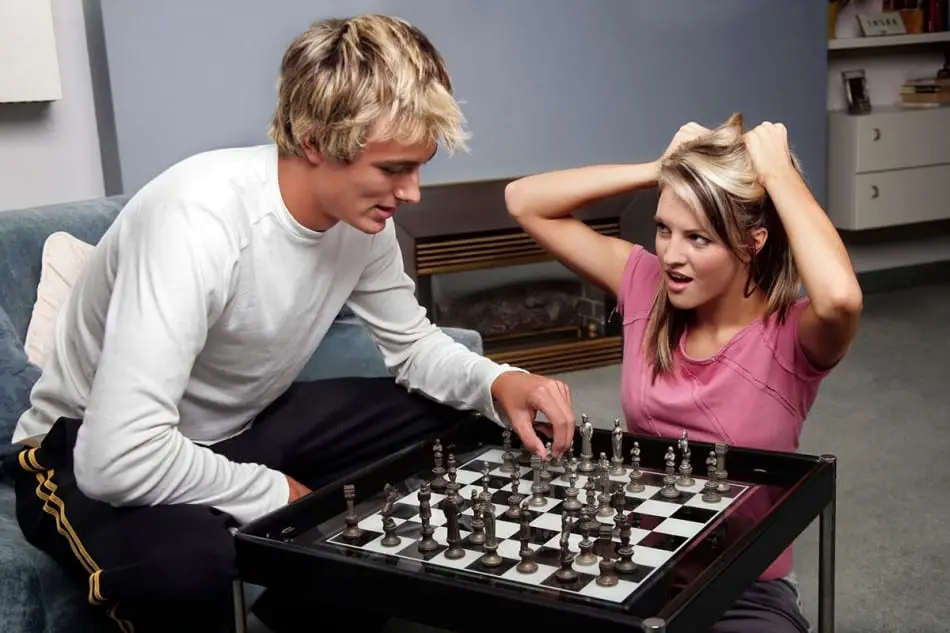
But don’t let this get you down. Chess is a challenging game, and many of the opponents you’ll face will have years, if not decades, of experience playing.
The best thing to do is learn from your mistakes. When you lose, question why you failed and what you could do to improve next time. If you’re comfortable with or close to your opponent, you can ask them for suggestions on how you could have done better during your game.
The lessons you learn from losing will be invaluable to you. In addition, the more experience you gain, the more you’ll start to see patterns emerging, and you’ll ultimately gain a much greater understanding of the game.
Learning the Jargon
There are some complex terms that you will need to learn to become a master of chess. Here are a few:
- Gambit. A gambit is when you sacrifice a piece to gain a tempo on your opponent. Gambits are often very aggressive.
- Tempo. This is when you gain a move of development over your opponent. Used in the right way, a tempo advantage can win you the game.
- Check. When your King is threatened
- Checkmate. When your King cannot move out of check
- Stalemate. A draw where neither party can win.
- En passant. A special move where a pawn can take another pawn if it moves two squares and ends up adjacent with an opponent’s pawn.
- Promotion. If a pawn gets to the other side of the board, it can be promoted to any other piece you wish.
As you can see, chess almost has its own language. The more you understand this language, the more you will master chess.
How to Respond to Your Opponent
As you develop experience, you’ll come to understand that chess isn’t just about moving your pieces and carrying out your own plan of action. Instead, it’s about understanding what your opponent is trying to do so that you can respond in the most appropriate way.
If you focus only on your attack, you’re likely to lose a lot of matches due to a counter-attack. You need to remember that, just as you have a plan, your opponent also has one.
By tailoring your moves to stop your opponent’s plan, you’ll be able to negate their attack and start a counter simultaneously. This will often turn the tide in your favor, helping you to win a lot more matches.
Top Tips for Success
Here are some final tips for success when teaching yourself chess:
- Think before you move. As your confidence increases, you may start to stop thinking about your moves. This could lead to some severe blunders, which could cause you to lose your game. Always keep in mind why you’re moving a piece and if it is safe to do so.
- Master the basics. The foundations of chess are fundamental, and it can be easy to forget when you’re in the middle of a close game. Here are some things to keep in mind when you play: Castle early, protect your pieces, control the center and have a plan.
- Respect your opponent. When you get beaten, it may be tempting to flip the board and curse in frustration. But, chess is a respectful sport, and when you get beaten, remember to congratulate and respect your opponent’s success.
- Have fun. Many people forget that they are only playing a game when they play chess, and games are meant to be enjoyed! Have fun when you play, and don’t beat yourself up over losses.
Conclusion
Chess is a beautiful but tremendously tricky game. On your journey, you’re going to get frustrated. You’re going to lose. You’re going to want to quit.
But then, you’ll start to understand your mistakes. And see new lines of attack. You’ll become more creative and learn how to deal with pressure, attack properly and stay patient when you have to.
Remember to have fun and castle early, and teaching yourself to play chess will be so enjoyable!

